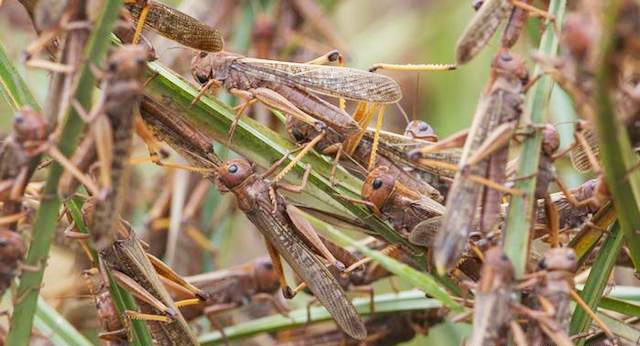
A resurgence of locust activity has been confirmed by Namibia’s Ministry of Agriculture, Fisheries, Water and Land Reform in the country’s northeastern Zambezi Region. The outbreak, believed to have been triggered by recent heavy rainfall, has been observed in both hopper and fledgling stages, prompting fears of a potential second wave of infestation. Affected areas include the floodplains near Ibbu along the Chobe River, as well as approximately 11 constituencies across the region.
The infestation was initially reported in early February, and since then, favourable breeding conditions—marked by persistent green vegetation—have been maintained, not only in Namibia but also in neighbouring Zambia, Botswana, and Angola. Farmers have been urged to report any sightings of locust bands or swarms to their nearest Agricultural Development Centre. The drying of vegetation is expected to prompt locusts to form mobile groups, potentially migrating northward in small swarms, further complicating containment efforts.
In response, a deployment of agricultural officers equipped with vehicle-mounted sprayers and mist blowers has been initiated by the government. Active monitoring and control operations are being conducted to mitigate the spread of the insects. This development follows a series of outbreaks in recent years, with one in 2020 having impacted more than 700,000 hectares across multiple northern regions. The ministry has reaffirmed its commitment to safeguarding food security and rural livelihoods through sustained surveillance and rapid intervention measures.
